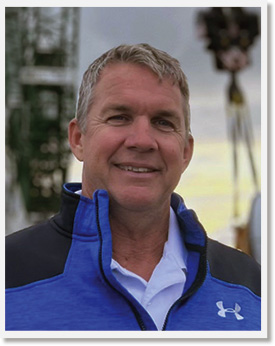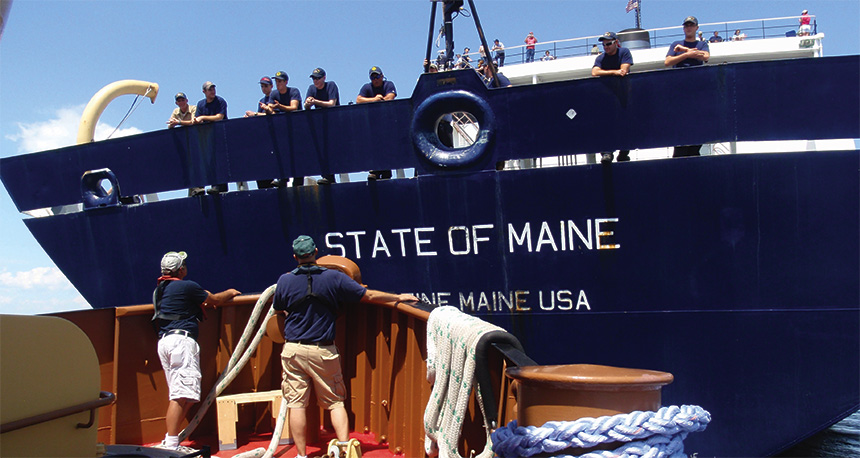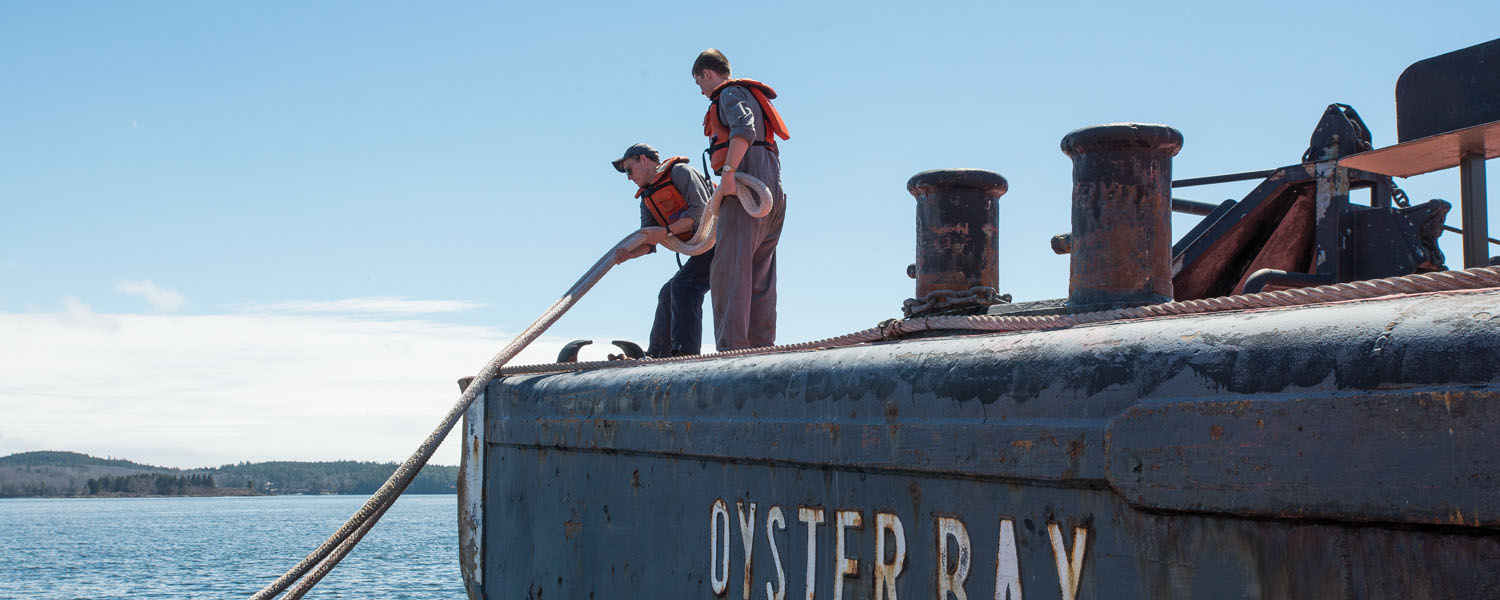PHOTO BY Ken Woisard
At the turn of the century, the nation’s seagoing fleet of privately owned merchant vessels comprised 282 vessels: 81 containerships, 11 dry bulk carriers, 22 general cargo ships, 39 ro-ro vessels, 12 integrated tug/barge combinations, and 117 tankers.
According to the U.S. Department of Transportation, today’s fleet is drastically smaller. As of January 2022, the nation’s seagoing fleet of privately owned merchant vessels comprised just 178 ships, 104 fewer than two decades earlier. That’s a decline in fleet size of 37 percent.
The decline in the Jones Act-eligible fleet—vessels built in the United States, owned by U.S citizens and crewed by U.S. mariners—is even more severe. In 2000, there were 193 oceangoing, self-propelled, cargo-carrying vessels qualified for the Jones Act trade. Twenty years later, the size of the Jones Act-eligible fleet had fallen to just 99 vessels, a shocking drop of 49 percent.
A recent report on the results of the latest manpower survey by the Baltic and International Maritime Council (BIMCO) and the International Chamber of Shipping reflects a current shortage of some 26,240 STCW-certified ships’ officers worldwide. Worse, BIMCO predicts that the present shortfall in the number of qualified officers will more than triple by 2026
According to Jeff Richards ’85, “Perhaps the most urgent question facing the U.S. maritime industry today . . . is where the men and women can be found to fill the increasing number of vacant positions for licensed officers needed to keep that fleet at sea.”
Although it’s difficult to come by hard numbers, the news doesn’t sound much better for the domestic fleet, especially that segment of the fleet comprising Jones Act-eligible ships. Unlicensed crew on these vessels may be U.S. citizens or foreign nationals with permanent resident status or enrolled at the U.S. Merchant Marine Academy at Kings Point. Only citizens of the U.S., though, may serve as “master, chief engineer, radio officer, or (other) officer in charge of deck watch or engineering watch”—licensed officers—aboard U.S. built, owned, and documented Jones Act-eligible vessels.
Where are shippers to find all the licensed officers, U.S. citizens or otherwise, required to sail America’s ocean-going fleet? That question isn’t hypothetical.

Jeff Richards ’85
According to Jeff Richards ’85, “Perhaps the most urgent question facing the U.S. maritime industry today, as more and more mariners age and retire or move away from seagoing careers, is where the men and women can be found to fill the increasing number of vacant positions for licensed officers needed to keep that fleet at sea.”
As the National Vice President, Deep Sea, for the American Maritime Officers (AMO), Richards sees the problem firsthand, tracking postings with the union for available seagoing jobs.
“I have never seen the job board (where employment opportunities are posted) more than 10 or 15 deep,” he said this past summer. “Right now, there are 125. It’s mind-blowing.
“We have approximately 150 seagoing vessels and around 3,000 officers. The shortage is by far the most pervasive I have seen in my career.”

Richard Balzano ’89
Richard Balzano ’89, a deputy administrator of the U.S. Maritime Administration (MARAD) from 2017 to 2020 and currently CEO and Executive Director of the Dredging Contractors of America, agrees with that assessment.
Balzano arrived at MARAD just about the time the agency’s Maritime Workforce Working Group reported that the U.S. had an available pool of 11,768 qualified mariners with the unlimited credentials required to sail the vessels in the nation’s deep sea Ready Reserve Force, a subset of vessels within MARAD’s National Defense Reserve Fleet ready to support the rapid worldwide deployment of U.S. military forces. The number of mariners required to staff this fleet fully, the report found, was 13,607, “leaving us about 2,000 mariners short,” Balzano said.
Nearly six years later, the shortage remains and the chances that will change anytime soon are scant. The pool of mariners holding appropriate licenses is shrinking. Graying license holders are retiring, and younger license holders are leaving their seagoing careers for shoreside jobs. With fewer young people entering the maritime profession, the mariner shortage continues to grow.
Perhaps the most urgent question facing the U.S. maritime industry today is where the men and women can be found to fill the increasing number of vacant positions for licensed officers needed to keep that fleet at sea.

Thomas Lord ’87
“The forecast is not looking pretty,” Thomas Lord ’87 said recently. Lord is the Executive Vice President of Seiden Krieger Associates, an executive search firm. He specializes in the marine transportation, logistics, oil and gas, and supply chain sectors. He began his career with Moran Towing Corporation and later worked with such international transportation and logistics companies as Hapag-Lloyd, US Shipping, Amerada Hess, Sea-Land Service, and Puerto Rico Marine Management.
Although “a lot of people have postponed retirement,” he said, “we haven’t seen the worst of it yet.”
Maybe, maybe not.
In an article appearing in the January-April 2017 edition of “The Coast Guard Journal of Safety & Security at Sea Proceedings of the Marine Safety & Security Council” AMO Vice President for Government Relations, Captain Christian Spain, wrote that the U.S. merchant marine “doesn’t have a recruitment issue, but it does have a retention issue.” Maybe it has both.
A recent report on the results of the latest manpower survey by the Baltic and International Maritime Council (BIMCO) and the International Chamber of Shipping reflects a current shortage of some 26,240 STCW-certified ships’ officers worldwide. Worse, BIMCO predicts that the present shortfall in the number of qualified officers will more than triple by 2026.
All three Academy alumni mentioned the current difficulties in persuading young men and women—even those who graduate from MMA or other maritime academies—to go to the sea, and then to keep them there. The reasons are complicated.
First, the excellent training the maritime academies provide, especially for engineering majors, opens the door for graduates to pursue shoreside jobs that pay well and don’t make the rigorous social demands that come with shipboard life.
Since the Covid pandemic, Lord said, he has seen “a different mindset” among job seekers. Work/life balance has become a serious consideration for both new and experienced officers. Younger mariners used to full-time “connectivity,” said Balzano, don’t want to be isolated from family and the outside world for months at a time.
“Going to sea is a much greater commitment than working shoreside,” Lord said.
Changing attitudes and a tight job market are forcing employers to improve job conditions with shorter tours at sea and fulltime shipboard internet, among other perks, and “ever more lucrative pay.”

A group of students aboard the Training Ship State of Maine talk to the Tug Pentagoet.
Even that may not be enough to fill some billets. Lord said he knew of a job posting for a 3rd Assistant Engineer that paid $20,000 per month that couldn’t be filled.
Graduating cadets, and young officers who may be dissatisfied with life at sea, can now “pick and choose the jobs they want,” Lord said. Many of those jobs are shore-based, and there seem to be plenty of them around.
Last fall, some 120 potential employers filled up the MMA’s field house to recruit students graduating in 2023. At some of the early recruiting events in Castine, Lord recalled, there were no more than 30 employers on hand.
What can be done to address this shortage of marine officers? The industry has recognized the need to promote a seagoing career to students at the high school level and has begun to develop programs that encourage young men and women to attend maritime academies. At the other end of the scale, unions and employers are working to persuade older seafarers to defer retirement. How those efforts succeed will have an enormous impact on the future of the nation’s merchant marine.
“It’s an exciting time,” Lord said.█
Stephen Rappaport is a Maine-based journalist and sailor who has written about maritime topics for more than thirty years.





Post Comment
Comments are moderated and will be reviewed prior to posting online. Please be aware that when you submit a comment, you agree to the following rules:
Maine Maritime Academy reserves the right to delete any comment that does not comply with these guidelines and is not responsible or liable in any way for comments posted by its users. If you have a message for the editor, please email mariner@mma.edu.
Features
View All >Read More
Read More
Castine, Maine 04420All Rights Reserved © 2025
Privacy Policy & Terms
Web issue? Contact Webmaster